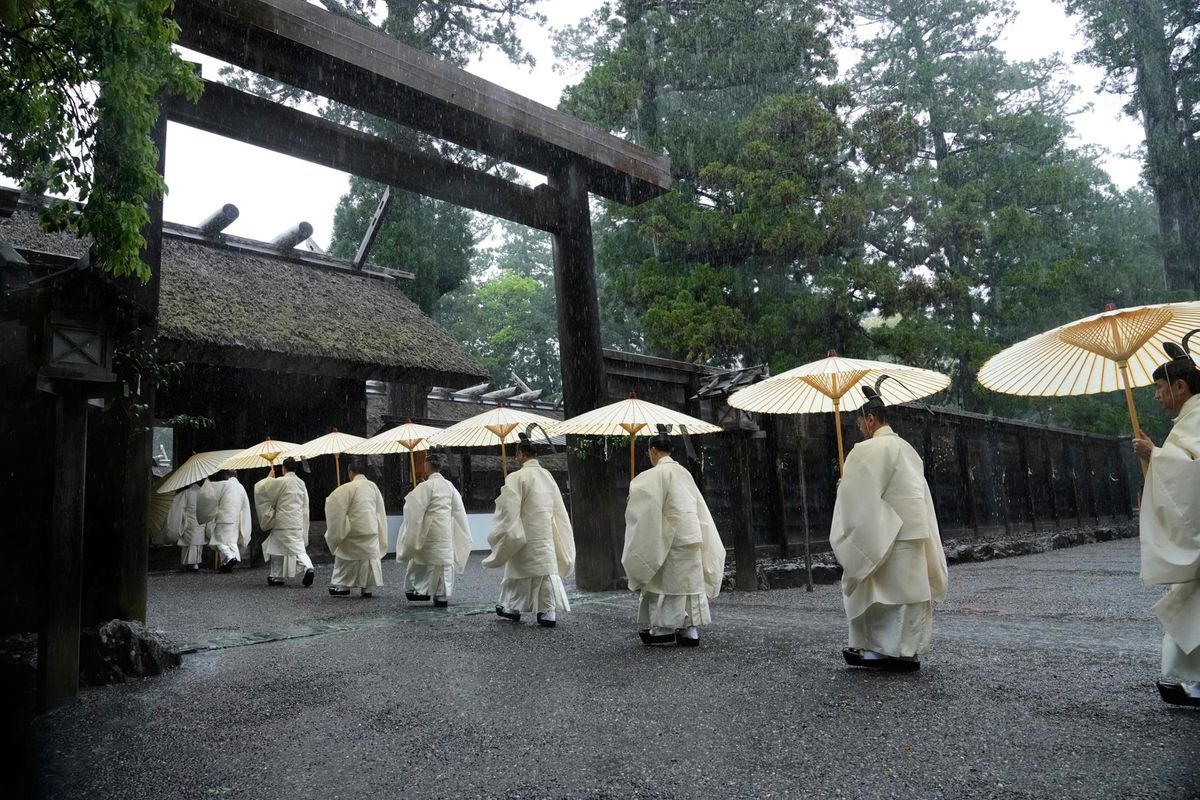Ise Jingu, the holiest Shinto shrine in Japan, has stood at the center of an extraordinary tradition. For over 1300 years, its buildings, artifacts, and ritual objects have been ceremonially rebuilt every 20 years in a process known as Shikinen Sengu. The cycle reflects deep Shinto beliefs in impermanence, renewal, and respect for craftsmanship.
The Scale and Rituals of Rebuilding
The current cycle remains underway as the 63rd reconstruction, a massive effort that involves recreating 125 shrine buildings and more than 1500 ritual artifacts. Woodcutters harvest ancient cypress trees, some over 300 years old, from Nagano’s Kiso region. Artisans rebuild the structures, following techniques passed down countless generations. The nine-year work ends with a ritual in 2033 in which the presiding deity, Amaterasu, formally moves into the fresh shrine.
Origins and Spiritual Meaning
Historians trace the practice back to 690 during the reign of Empress Jito. The cycle grew from ideals of tokowaka, a Shinto concept that means perpetual youth or timeless renewal. Because wood and natural materials decay, rebuilding ensures the shrine remains vibrant and spiritually clean. Also, construction skills, architectural knowledge, and sacred rituals survive across ages through this every two-decade practice.
Community and Craftsmanship
Carpentry and related skills form the backbone of Ise’s rebuilding. Master carpenters, woodcutters, reed growers, and numerous artisans commit nearly a decade to bring the shrine to life again. Cypress groves are tended over centuries, the roof is made from miscanthus reeds that require many years to grow, and ritual objects are meticulously prepared. The work binds generations and reinforces a cultural identity rooted in harmony with nature.
Symbolism of Impermanence and Renewal
Because everything old is replaced, Ise Jingu embodies Shinto’s appreciation for cycles of life. The ritual demolition does not signify loss; rather, it marks spiritual renewal. Shrines degrade under elements, but rather than letting debris symbolize neglect, the rebuilding symbolizes devotion. Additionally, ceremonies that accompany the cycle express reverence for nature and the earth from which materials come.
What the Rebuilding Means Today
Despite modern pressures such as urbanization, an aging population, and climate change, the cycle persists. It still costs around 390 million US dollars and takes nearly a decade to complete. Pilgrims visit from across the world, drawn to the ritual, aesthetics, and history. Also, the rebuilding cycle fosters tourism and cultural education, reminding many young Japanese of their heritage.
Conclusion
Ise Jingu’s practice of rebuilding every 20 years stands as one of the world’s most remarkable cultural traditions. It demonstrates that impermanence need not mean neglect; rather, renewal can affirm continuity. Through ritual, craftsmanship, and spiritual faith, generations collaborate to preserve not just a shrine, but a living tradition. This cycle, born centuries ago, continues offering lessons about nature, time, and what it means to refresh the sacred.
Bonus Read: Ethiopia Launches Africa’s Biggest Dam Amid Hope and Regional Concerns




One thought on “Ise Jingu: The Shinto Shrine Rebuilt Every 20 Years for Over a Millennium”